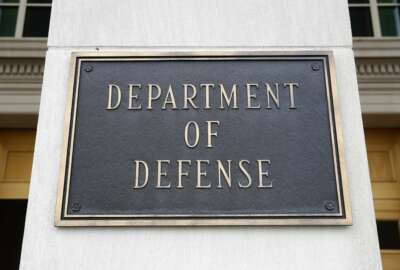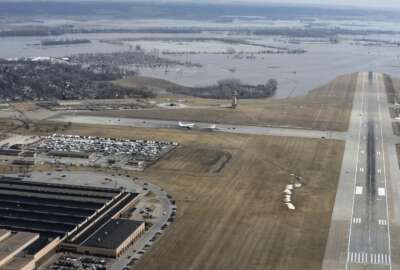
DoD takes large step in changing operations, business for a world affected by climate change
The Pentagon will change the way it trains and equips troops and require some emissions transparency from contractors.
The Defense Department is taking its largest step ever to prepare the military for a world in which climate change impacts military operations, weapons and real estate, and is making some efforts to be more transparent about its own greenhouse emissions and the emissions of the companies with which it contracts.
The 32-page strategy, released by the Pentagon Thursday, is aimed at building a military that operates within a world where extreme weather, melting ice caps and shifting resources is the norm.
“Climate change will continue to amplify operational demands on the force, degrade installations and infrastructure, increase health risks to our service members, and could require modifications to existing and planned equipment,” Defense Secretary Lloyd Austin wrote in the plan. “Extreme weather events are already costing the Department billions of dollars and are degrading mission capabilities.”
He continued to note that DoD must change as well.
“The Department must take bold steps to accelerate adaptation to reduce the adverse impacts of climate change. These adaptation efforts must align with our strategic objectives and mission requirements, ensuring that our military can deter aggression and defend the nation under all conditions,” Austin wrote.
The strategy is made up of five lines of effort, mostly focused on ensuring the military can operate effectively in the new climate structure.
One effort targets leadership in adding climate change to their decision making process.
From now on, DoD will incorporate climate change factors into all threat assessments and strategies and will incorporate climate exposure and sensitivity into its cost-benefit analyses. That includes consideration of greenhouse gas emissions and their social impact.
DoD already has some tools it uses to this end, like the Air Force’s Geospatial Supply Chain Risk Identification and Monitoring, which alerts critical suppliers when they are in the path of environmental risks.
Another large effort mandated by the strategy is simply training troops for a world mangled by extreme weather and equipping them with the right gear to handle it.
DoD will start training more in extreme weather conditions, possibly by new systems or updated existing ones to be more resilient in those conditions and test current equipment for durability.
After seeing multiple bases effected by natural disasters and sea level rise, DoD is focusing efforts are hedging its infrastructure against environmental threats.
DoD will create standards for installation readiness and constantly monitor bases for resiliency. This step has been a pet project of Rep. Jim Langevin (D-R.I.) chairman of the House Armed Services Cyber, Innovative Technologies and IT subcommittee. Langevin pushed DoD to assess its bases for threats from climate change.
Additionally, the Pentagon is planning on protecting its supply chain from extreme weather, which includes reckoning with the amount of emissions and energy use DoD contributes.
The department will stress test its supply chain and work with major suppliers to fix areas of risk. It will also consider stockpiling key materials.
DoD plans to leverage its purchasing power to push industry into being more climate conscious.
“The department will use its position as the single largest buyer of goods and services to drive transparency within and across its supply chain; expecting major suppliers to fully disclose greenhouse gas emissions and broader environmental, social and governance performance,” the strategy states.
The Pentagon plans to pioneer carbon-sequestering technologies as well, which stores dangerous gasses instead of letting them into the atmosphere.
DoD will also focus on topics like enhancing climate literacy in its work forces, updating assessment capabilities and forming installations that can rapidly respond and recover from disruptive conditions.
The Pentagon’s strategy spurs from a broader mandate from the White House, requiring 23 agencies and departments to come up with climate adaptation plans.
“Agencies face a multitude of risks caused by climate change, including rising costs to maintain and repair damaged infrastructure from more frequent and extreme weather events, challenges to program effectiveness and readiness, and health and safety risks to federal employees who work outside,” a statement from the White House reads. “By taking action now to better manage and mitigate climate risks, we will minimize disruptions to federal operations, assets and programs while creating safer working conditions for employees.”
Copyright © 2025 Federal News Network. All rights reserved. This website is not intended for users located within the European Economic Area.
Scott Maucione is a defense reporter for Federal News Network and reports on human capital, workforce and the Defense Department at-large.
Follow @smaucioneWFED






